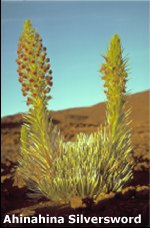- Home
- About S&T
- Taxa/Organisms
- Ecosystems
- Issues
- Methods & Tools
- Reports & Publications
- Location
- Search
Publisher: USGS | Science Center: Fort Collins Science Center (FORT, Ft. Collins) | Format: URL
www.fort.usgs.gov — This publication is intended to provide a summary of long-range surveillance radar technology and applications of these data to questions about movement patterns of birds and other flying wildlife based on publications that provide more detailed information (Buurma, 1995; Gauthreaux and Belser, 2003a, b; Gauthreaux and others, 2003; Diehl and More...

Publisher: USGS | Science Center: Pacific Island Ecosystems Research Center (PIERC, Honolulu) | Format: URL
biology.usgs.gov — How is avian pox and malaria impacting native Hawaiian honeycreepers? USGS scientists in Hawaii conduct surveys, develop new diagnostic tools, and test management strategies to understand the impacts of these introduced vector borne diseases on native Hawaiian wildlife.

Publisher: USGS | Science Center: Pacific Island Ecosystems Research Center (PIERC, Honolulu) | Format: URL
biology.usgs.gov — USGS scientists build on the research of ornithologists in the 1800's and 1950's to show whether native Hawaiian birds are in fact highly susceptable to mosquito-transmitted avian diseases such as pox and malaria. The results help explain current population patterns and could potentially aid resource managers in selecting birds for restoration in More...

Publisher: USGS | Science Center: Pacific Island Ecosystems Research Center (PIERC, Honolulu) | Format: URL
biology.usgs.gov — Many native Hawaiian forest birds have become endangered and extinct, possibly due to introduced avian diseases. Scientists use genetics, long term studies, and sentinel chickens and canaries to learn the prevalence and impacts of malaria and avian pox on native Hawaiian forest birds.

Publisher: USGS | Science Center: Pacific Island Ecosystems Research Center (PIERC, Honolulu) | Format: URL
biology.usgs.gov — The geographical isolation of the Hawaiian Islands has resulted in the evolution of a highly endemic biota: approximately 80 percent of Hawaii's plants, 100 percent of its forest birds, and 67 percent of its arthropods are found nowhere else in the world. But human colonization of the Islands has severely impacted native plant and animal More...
